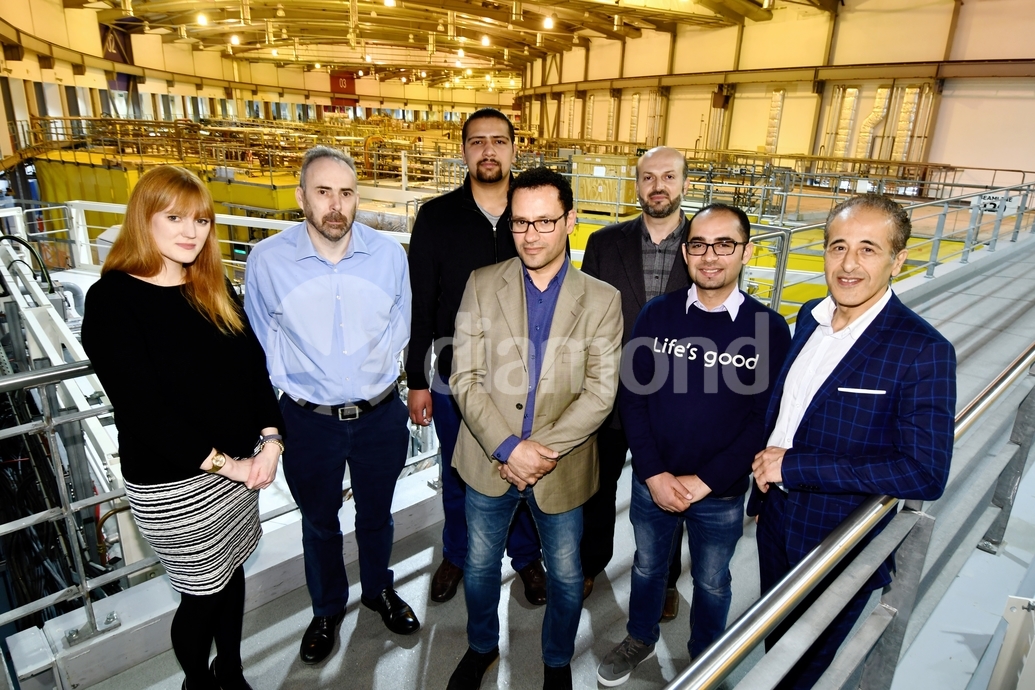A £1.5 million grant from the Department for Business, Energy and Industrial Strategy (BEIS) through the Rutherford Fund has been awarded to the Diamond Light Source. This is to support the development and growth of the SESAME (Synchrotron-light for Experimental Science and Applications in the Middle East) light source, an intergovernmental science centre (as in the case of CERN) in which the Members are Cyprus, Egypt, Iran (Islamic Republic of), Israel, Jordan, Pakistan, the Palestinian Authority, and Turkey. The United Kingdom is one of the sixteen countries which, together with CERN and the European Union, enjoys observer status in the SESAME Council.

The award will create the Diamond SESAME Rutherford Fellowship Training Programme for the training and development of approximately 25 individuals in areas of science and engineering associated with the construction and operation of SESAME located in Jordan. Candidates will be either SESAME employees or persons contracted to SESAME for the period of the fellowship.
Andrew Harrison, CEO of Diamond explains: “SESAME represents a unique peace project for the Middle East region because of the excellent opportunity to stimulate and support scientific and technical activity, training and engagement in the region. SESAME focuses on areas of local importance such as water supply, energy, health and the environment – and we are keen to nurture new talent and share our skills, and this significant grant will enable us to build stronger links.”
SESAME has recently reached the goal of commissioning the storage ring and has an initial complement of two beamlines ready for commissioning. While it has reached this important milestone, there remains considerable work to establish the facility as a fully operational user facility. The next step for the facility is to develop the number of staff as well as equip them with the skills and experience needed to build the science and technical programme for the facility.
Andrew Harrison adds: “This award will support a fellowship programme for around 25 individuals, with each fellowship lasting up to 13 months. Each fellowship will enable the training and development of the capabilities of individuals in areas of science and engineering associated with the construction and operation of SESAME. The programme is broad covering the areas of: photon science, photon instrument science, software and computing, and engineering or particle accelerators. Fellows appointed to the programme will undertake training and development by visiting Diamond to expand their knowledge and understanding through working with our staff. During their time on the programme, they will be supported financially for the period of secondment to Diamond and when they return to SESAME.”
The programme and development needs are being defined by SESAME, and Diamond will be looking to place Fellows in appropriate groups within Diamond. Each Fellow is likely to spend around two to three months at Diamond. When they return to SESAME, they will continue as Fellows on the programme for up to ten to eleven months during which Diamond will provide them with ongoing technical support and mentoring as appropriate.
Khaled Toukan, Director of SESAME, says: “It is always very gratifying to receive help from one of the Observer countries, and the expertise of a well-established synchrotron laboratory such as Diamond will be sharing with SESAME, that is in its infant years, is truly appreciated. Indeed, the scientists and engineers who will benefit from a Diamond SESAME Rutherford Fellowship will greatly strengthen the know-how and excellence of the teams building and operating SESAME, which in turn will allow SESAME to develop at a far quicker pace than would otherwise have been the case. SESAME is very grateful to BEIS, the Rutherford Fund and Diamond.”
About Diamond
Diamond Light Source is the UK’s synchrotron science facility. Shaped like a huge ring, it works like a giant microscope, harnessing the power of electrons to produce bright light that scientists can use to study anything from fossils to jet engines to viruses and vaccines. Diamond accelerates electrons to near light speeds, producing a light 10 billion times brighter than the Sun, which is then channelled into 31 laboratories known as ‘beamlines’.
Thousands of scientists use the UK’s synchrotron each year, with 57% visiting and 43% accessing the facility remotely. Diamond’s state-of-the-art facilities and world-class people act as agents of change, addressing 21st century challenges such as disease, clean energy and food security. Diamond research supports new medicines, technologies and advances of all kinds.
In 2017 Diamond celebrated a double anniversary: 15 years since the company was formed, and 10 years of research operations. More than 6,500 papers have been published because of research conducted at the facility. In 2016 Diamond received an Athena Swan Bronze Award, demonstrating a commitment to understanding workplace issues and developing credible action plans to tackle workplace inequality. The achievement marks a commitment to ensure that Diamond continues to attract the best scientists and engineers from around the world.
Funded by the UK Government through the Science and Technology Facilities Council (STFC), and by the Wellcome Trust, Diamond is one of the most advanced scientific facilities in the world, and its pioneering capabilities are helping to keep the UK at the forefront of scientific research.
For more information about Diamond visit www.diamond.ac.uk.
http://www.diamond.ac.uk/Home/News/LatestNews/2018/10-04-2018.html

